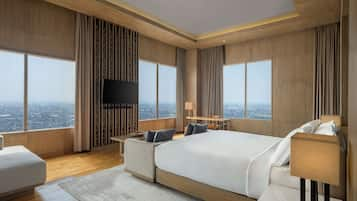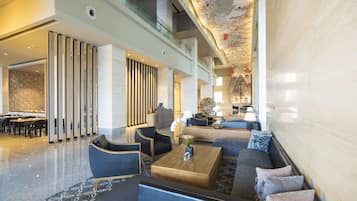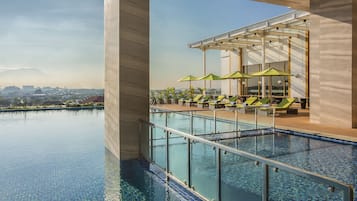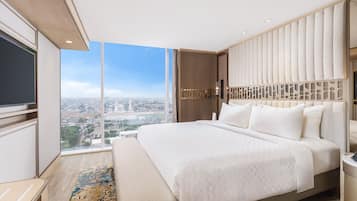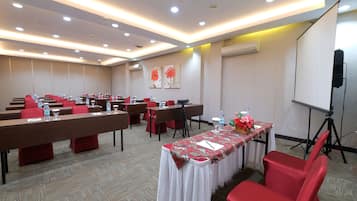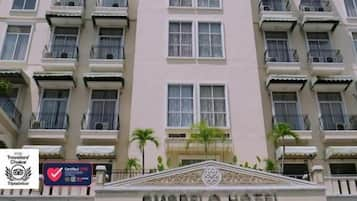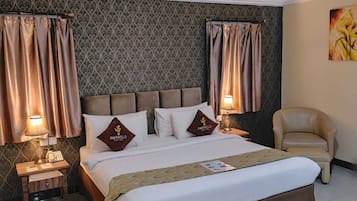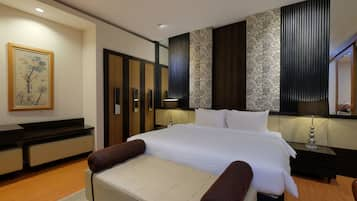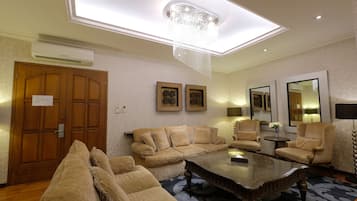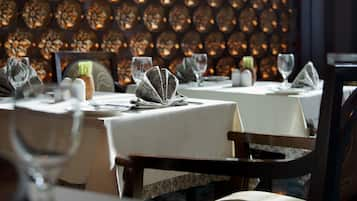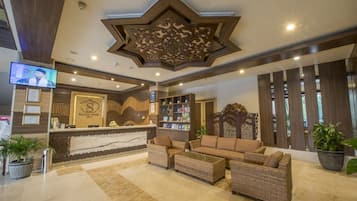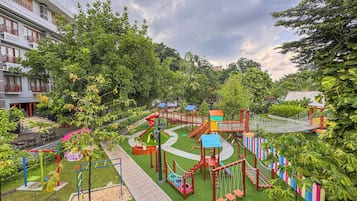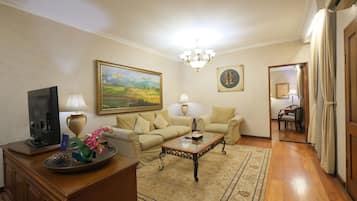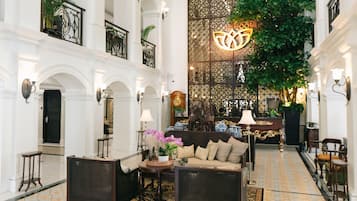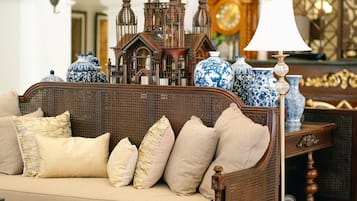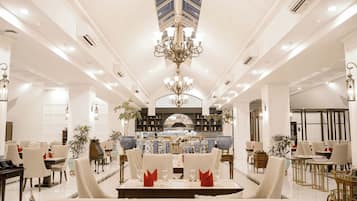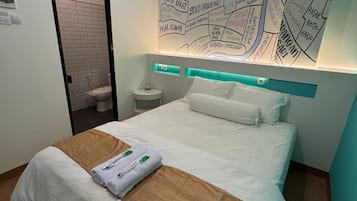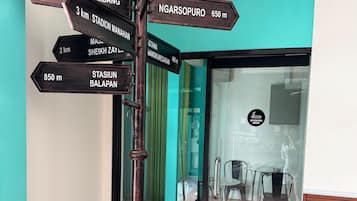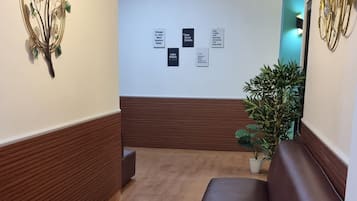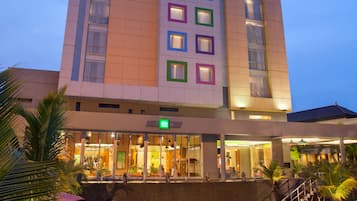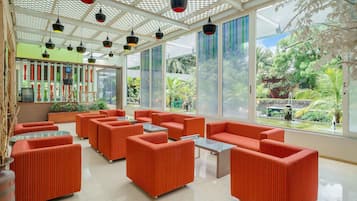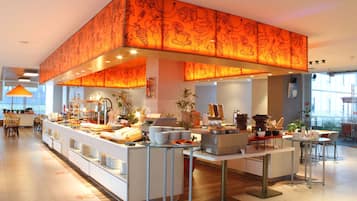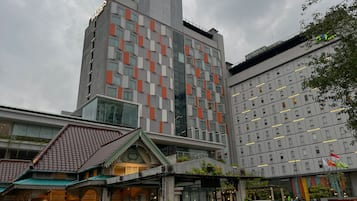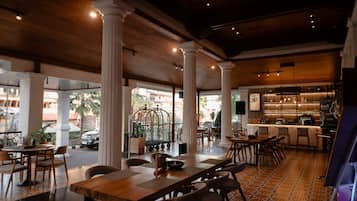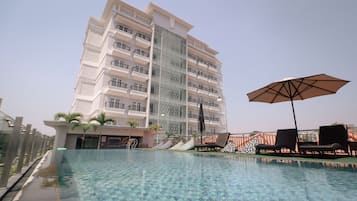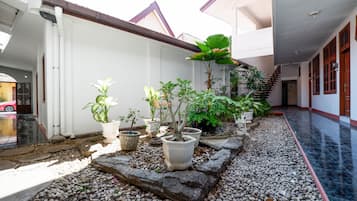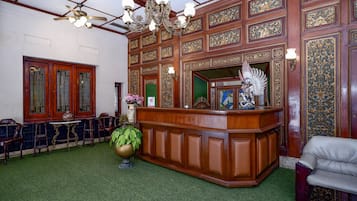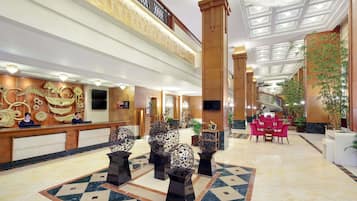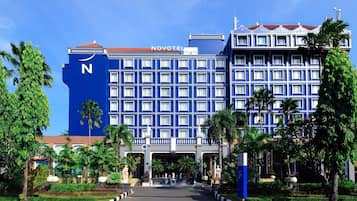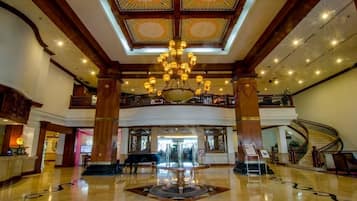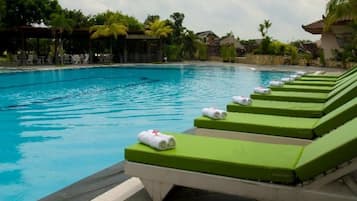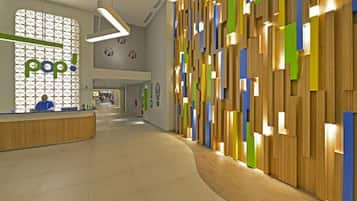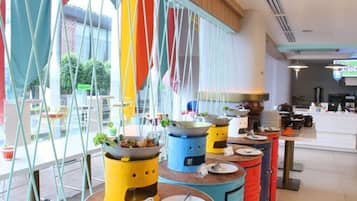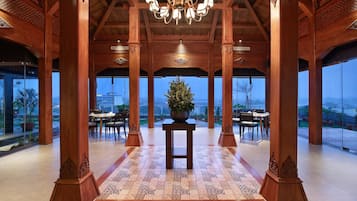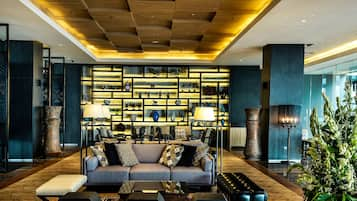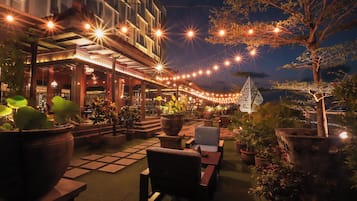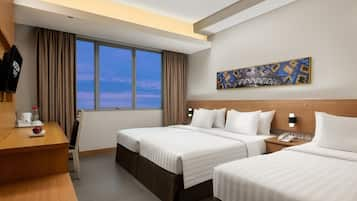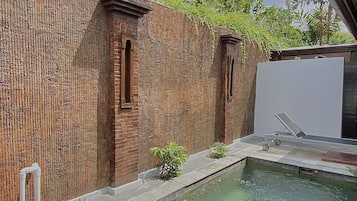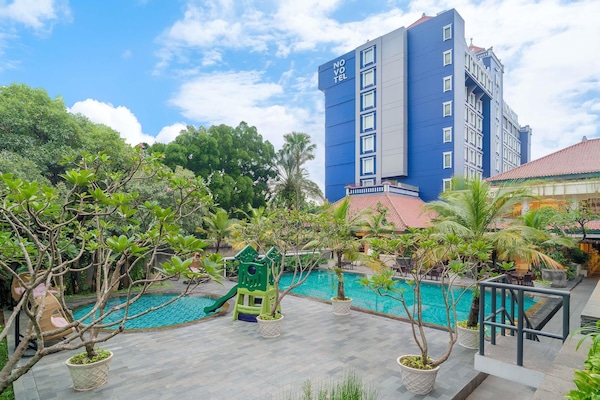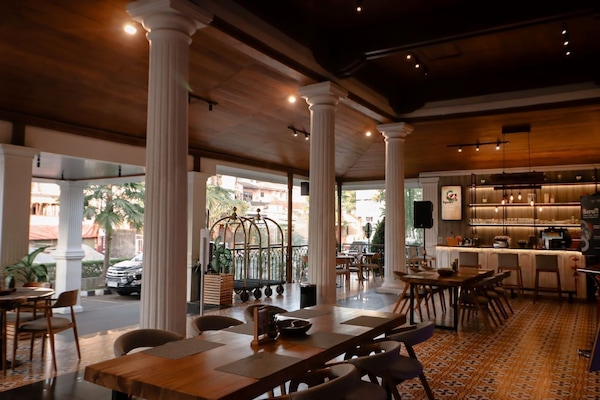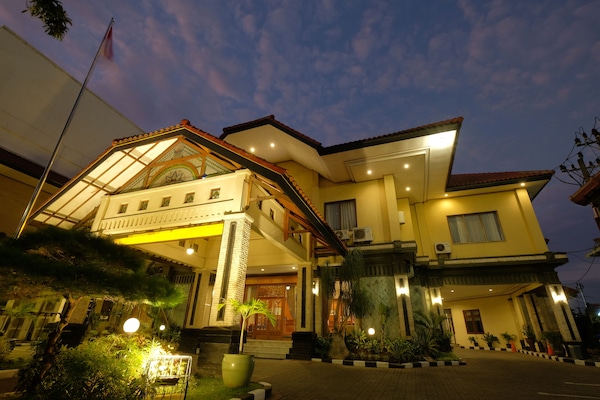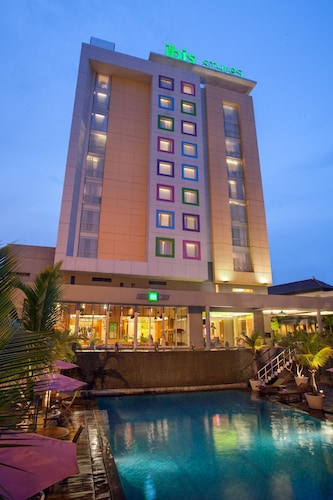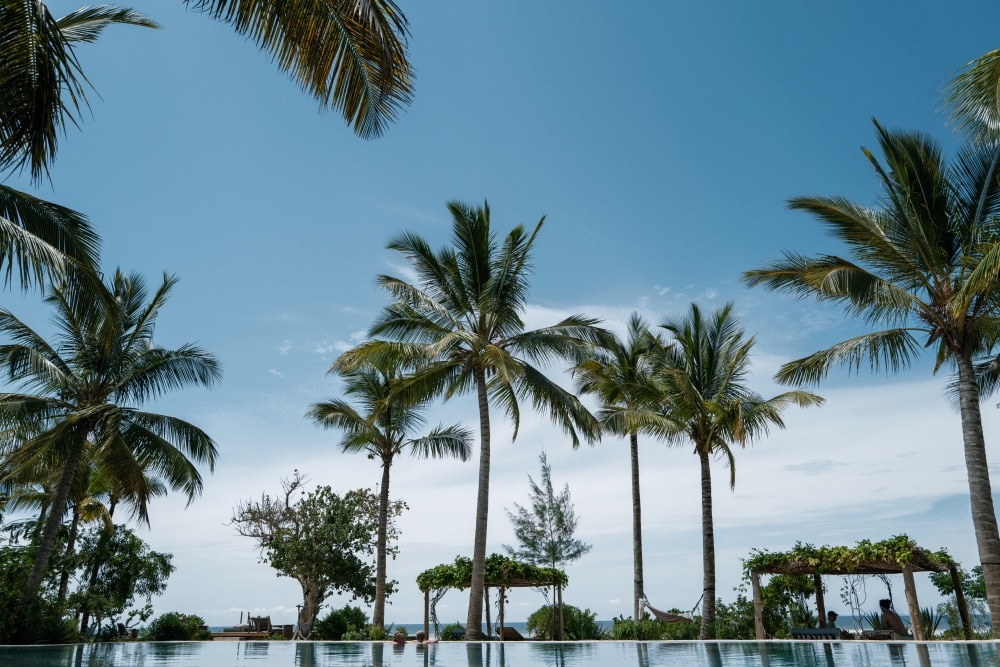Photo by Sharrie Shaw
Surakarta Hotels
- Change your mindBook hotels with free cancellation
- Be pickySearch almost a million properties worldwide
Go beyond your typical stay in Surakarta
Family friendly
Check prices for these dates
Top 10 trending Surakarta hotels

Alila Solo, Java
Surakarta
9.2 out of 10, Wonderful, (132)
The price is P3,454
P4,180 total
includes taxes & fees
Nov 21 - Nov 22

Swiss-Belhotel Solo
Banjarsari
9.2 out of 10, Wonderful, (38)
The price is P2,512
P3,039 total
includes taxes & fees
Nov 17 - Nov 18

Lampion Hotel Solo
Surakarta
7.4 out of 10, Good, (6)

Amarelo Hotel
Surakarta
The price is P1,021
P1,236 total
includes taxes & fees
Nov 17 - Nov 18
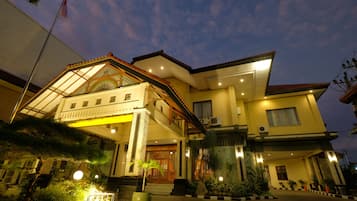
Diamond Hotel Solo
Surakarta
9.0 out of 10, Wonderful, (2)
The price is P1,051
P1,272 total
includes taxes & fees
Nov 21 - Nov 22
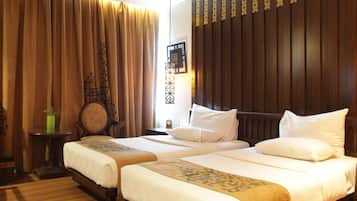
The Royal Surakarta Heritage - Handwritten Collection
Solo City Centre
8.4 out of 10, Very Good, (165)
The price is P1,787
P2,163 total
includes taxes & fees
Dec 1 - Dec 2
Lowest nightly price found within the past 24 hours based on a 1 night stay for 2 adults. Prices and availability subject to change. Additional terms may apply.
Showing deals for:Nov 28 - Nov 30
Image gallery for Grand Mercure Solo Baru

Grand Mercure Solo Baru
Grogol
8.6/10Excellent (76 reviews)
15% off
Price is P2,568
P6,215 total
includes taxes & fees
Save an average of 15% on thousands of hotels when you're signed in
Where to stay in Surakarta
Find the best Surakarta areas and neighborhoods for the activities you enjoy most.
Solo City Centre
You'll enjoy the museums and zoo in Solo City Centre. You might want to make time for a stop at Solo Paragon Lifestyle Mall or Keprabon Park.
Banjarsari
While visiting Banjarsari, you might make a stop by sights like Solo Paragon Lifestyle Mall and Balekambang City Park.
Stay near popular Surakarta attractions
Surakarta and related destinations
The royal Keraton Surakarta palace showcases Javanese heritage with traditional dance performances and ornate artifacts from the sultanate era. Explore Pasar Gede market for local batik textiles, then visit nearby Sangiran to see ancient human fossils in the UNESCO-listed museum.
![At the museum no photos are allowed which is really unfortunate as it was well worth the visit and the guided tour is definitely not to be missed. In the museum there are even Batik made from the Dutch era which depicts stories like Little Red Riding Hood and Snow White!
I enjoyed the tour v much and at the end of the tour we were brought to this room where the artisan were working on hand drawn batik.
Below is an excerpt from Wikipedia for anyone interested in learning more about the process of batik making.
Firstly, a cloth is washed, soaked and beaten with a large mallet. Patterns are drawn with pencil and later redrawn using hot wax, usually made from a mixture of paraffin or bees wax, sometimes mixed with plant resins, which functions as a dye-resist. The wax can be applied with a variety of tools. A pen-like instrument called a canting (IPA: [tʃantiŋ], sometimes spelled with old Dutch orthography tjanting) is the most common. A canting is made from a small copper reservoir with a spout on a wooden handle. The reservoir holds the resist which flows through the spout, creating dots and lines as it moves. For larger patterns, a stiff brush may be used. Alternatively, a copper block stamp called a cap (IPA: [tʃap]; old spelling tjap) is used to cover large areas more efficiently.
After the cloth is dry, the resist is removed by scraping or boiling the cloth. The areas treated with resist keep their original color; when the resist is removed the contrast between the dyed and undyed areas forms the pattern. This process is repeated as many times as the number of colors desired.
The most traditional type of batik, called batik tulis (written batik), is drawn using only the canting. The cloth need to be drawn on both sides and dipped in a dye bath three to four times. The whole process may take up to a year; it yields considerably finer patterns than stamped batik.
Source: Wikipedia](https://images.trvl-media.com/place/6224808/26fd1460-c65a-4c1a-9444-7a893e883ac9.jpg?impolicy=fcrop&w=300&h=400&p=1&q=high)
Photo by Sharrie Shaw
Open Photo by Sharrie Shaw
Top Surakarta Hotel Reviews
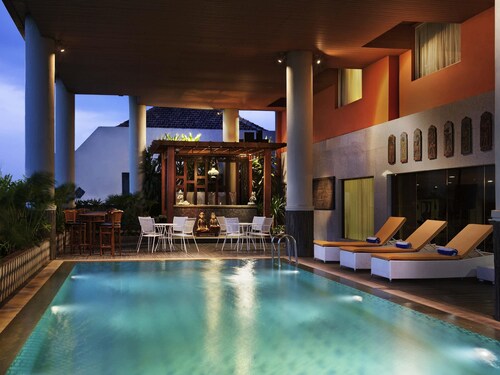
The Royal Surakarta Heritage - Handwritten Collection
6/10 Okay
More cheap stays in Surakarta

Dparagon Kerten
Jl. Siwalan, Surakarta, Jawa Tengah
Frequently asked questions
Explore a world of travel with Expedia
Areas of Surakarta
Hotels Near Surakarta, Central Java
- Java Hotels
- Prambanan Hotels
- Salatiga Hotels
- Pakem Hotels
- Southeast Asia Hotels
- Tawangmangu Hotels
- Baki Hotels
- Klaten Hotels
- Colomadu Hotels
- Grogol Hotels
- Wonogiri Hotels
- Cangkringan Hotels
- Nguntoronadi Hotels
- Ngemplak Hotels
- Laweyan Hotels
- Boyolali Hotels
- Selo Hotels
- Kartosuro Hotels
- Sragen Hotels
- Ngemplak Hotels
More ways to book
Expedia's Latest Trends
Hotels
![At the museum no photos are allowed which is really unfortunate as it was well worth the visit and the guided tour is definitely not to be missed. In the museum there are even Batik made from the Dutch era which depicts stories like Little Red Riding Hood and Snow White!
I enjoyed the tour v much and at the end of the tour we were brought to this room where the artisan were working on hand drawn batik.
Below is an excerpt from Wikipedia for anyone interested in learning more about the process of batik making.
Firstly, a cloth is washed, soaked and beaten with a large mallet. Patterns are drawn with pencil and later redrawn using hot wax, usually made from a mixture of paraffin or bees wax, sometimes mixed with plant resins, which functions as a dye-resist. The wax can be applied with a variety of tools. A pen-like instrument called a canting (IPA: [tʃantiŋ], sometimes spelled with old Dutch orthography tjanting) is the most common. A canting is made from a small copper reservoir with a spout on a wooden handle. The reservoir holds the resist which flows through the spout, creating dots and lines as it moves. For larger patterns, a stiff brush may be used. Alternatively, a copper block stamp called a cap (IPA: [tʃap]; old spelling tjap) is used to cover large areas more efficiently.
After the cloth is dry, the resist is removed by scraping or boiling the cloth. The areas treated with resist keep their original color; when the resist is removed the contrast between the dyed and undyed areas forms the pattern. This process is repeated as many times as the number of colors desired.
The most traditional type of batik, called batik tulis (written batik), is drawn using only the canting. The cloth need to be drawn on both sides and dipped in a dye bath three to four times. The whole process may take up to a year; it yields considerably finer patterns than stamped batik.
Source: Wikipedia](https://images.trvl-media.com/place/6224808/26fd1460-c65a-4c1a-9444-7a893e883ac9.jpg?impolicy=fcrop&w=1200&h=500&q=medium)
